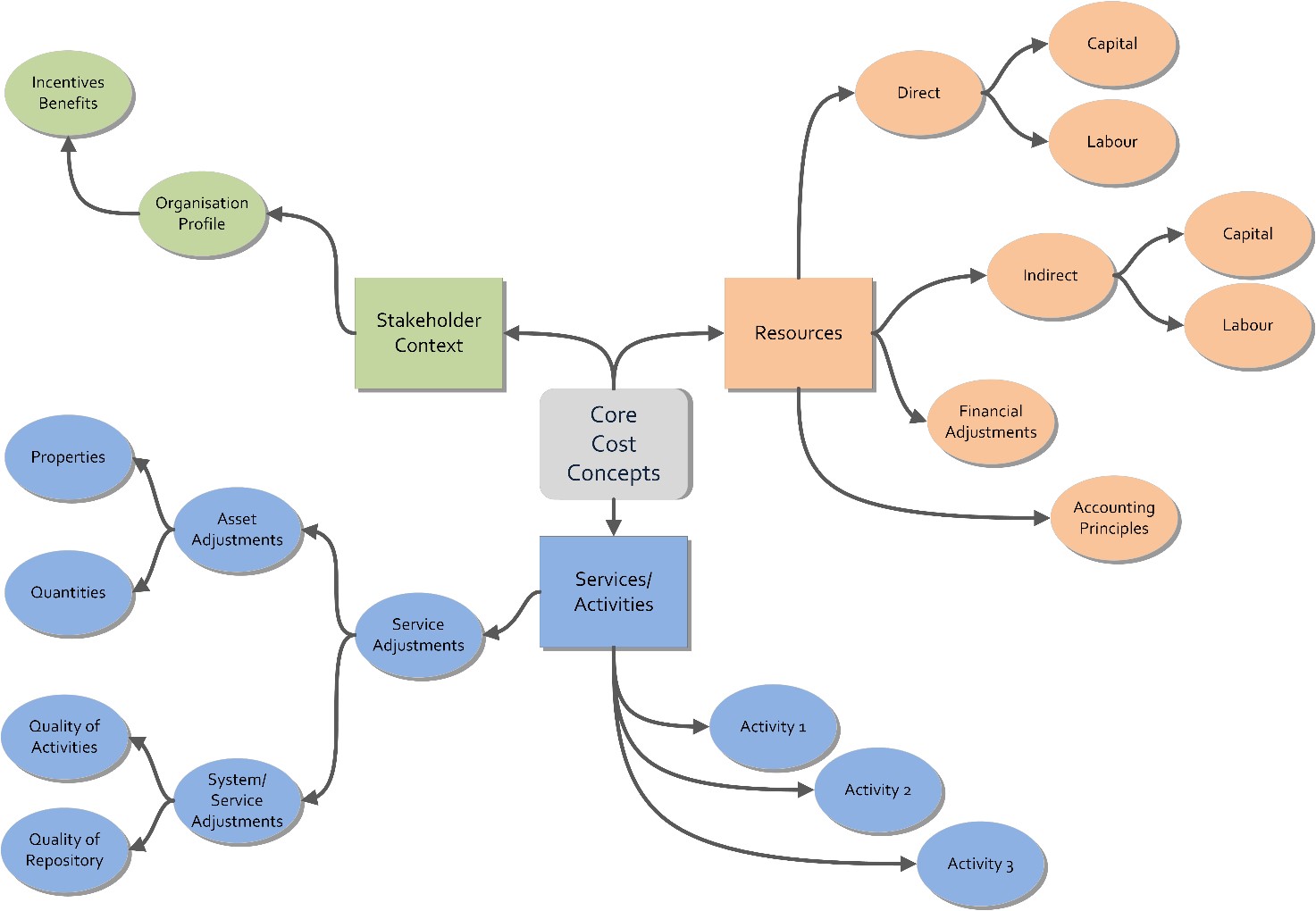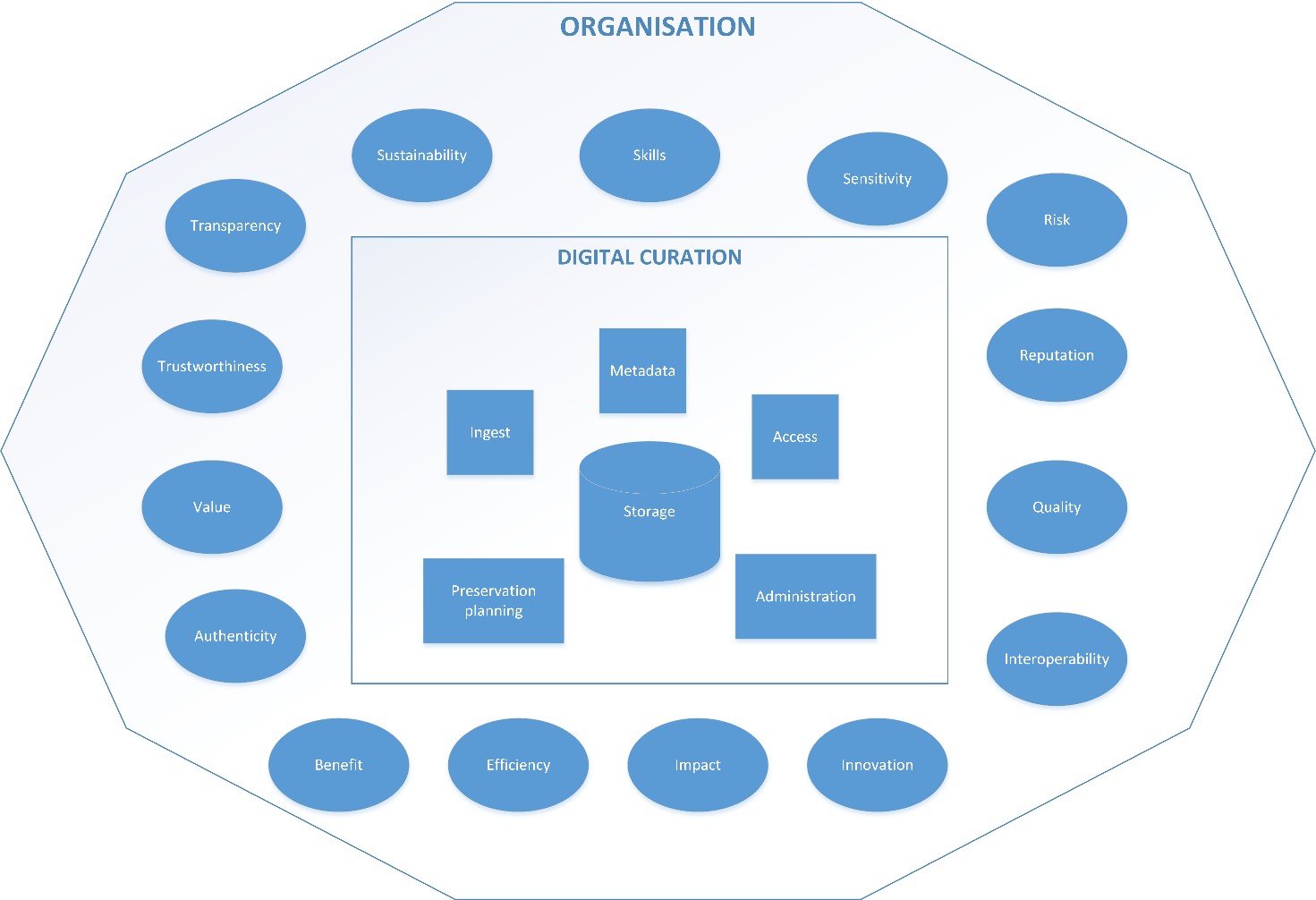'Valuable feedback from Berlin' by Alex Thirifays, Katarina Haage and Hervé L'Hours
In order to understand more about our stakeholders’ needs and wishes for a) the Cost Concept Model and b) the Curation Costs Exchange, the 4C-project planned to go through another iteration concerning these future community resources by attaching a focus group to the Archiving Conference 2014 in Berlin.
Among the 13 attendees there were 9 participants including 2 guest presenters from the Netherland’s Coalition for Digital Preservation (NCDD) who had been invited because of the close ties that exist between them and 4C project, both in terms of cost model development expertise and a mutual willingness to collaborate both within and beyond the lifetime the 4C-project.
After a welcome and brief overview of the 4C-project, the participants introduced themselves and formulated their expectations of the meeting.
Hervé L’Hours from the UK Data Archive presented the Cost Concept Model and the Gateway Requirements Specification. These two resources are designed to provide a common reference for cost concepts models, methods and tools. The target audience is repository managers; cost model theorists and tool developers. This common framework is based on common concepts and a generic specification that can be used in follow-up R&D projects. Curation cost concepts are defined and their interdependencies described and a common baseline for future curation cost work is set against which current and future cost methods, models and tools can be benchmarked.

Figure 1 - Draft Diagram of the Cost Concept Model
Prior to the event, attendees were provided with an outline of the deliverable structure and the workshop questions which would be presented.
At the event, the structure and content of the deliverable were described in more detail. The attendees and the guest speakers were then split into two groups, mediated by members of the 4C-project team. Though forms were provided for annotating responses to questions, the general tone was informal as the project team took advantage of an opportunity to test concepts and definitions in the real world.
Overall the structure of the deliverable was well received and provided an effective means of standardising communications around this complex area. As expected, there are some artefacts from current cost models (e.g. common descriptions of collection profiles and a standard approach to grouping types of labour) which were not well established within the attendees’ organisations. One area for improvement in the deliverable is a clearer distinction between stakeholder context (stakeholder identification and management, perhaps closest to Designated Community monitoring in OAIS terms) and Organisation Context which will be more clearly defined as relevant business intelligence derived from stakeholder interaction in future versions of the deliverable.
The audience was also presented to the idea of 'Indirect Economic Determinants' and how these could be integrated in a Cost Concept Model. Without going into much detail about this discussion here, it was very clear to the attendees that Indirect Economic Determinants have a very real impact on the costs of curation, as depicted below.

Figure 2 - An example of a digital curation environment and the Indirect Economic Determinants surrounding and influencing it
Marcel Ras and Joost van der Naat from the Netherlands Coalition for Digital Preservation then briefly presented respectively an overview of the activities of the coalition and of their cost modelling approaches. The short discussion that followed was focused on the possible future sustainability efforts that the Netherlands Coalition for Digital Preservation may be able willing to offer, namely regarding the Curation Costs Exchange.
The last session of the day was devoted to the Curation Costs Exchange, which is designed to be a convergence space for all kinds of information on the costs and economics of curation and for everyone interested in understanding them.
The Curation Costs Exchange consists of two main spaces:
- Information on the costs and economics of curation, including guidelines to existing cost models, 4C-resources such as the Cost Concept Model, the Economic Sustainability Reference Model, a literature overview as well as a space where stakeholders can communicate, share ideas and experiences, read about news & events, and contact each other.
- A crowd-sourced driven database for the sharing of cost data and a tool for the automatic generation of results based on these cost data for the purposes of self-assessment, average comparisons and comparisons with peers and insights into the financial accountings and activity costs of other organisations (non-functional mock-up of the Submission Template ).
The second space – the crowd-sourced driven database – was the day’s focus.
It is a very daring challenge because its success depends entirely on the willingness of organisations to submit their cost data and thus on their understanding of both the efforts that it implies and the benefits that it entails.
We had distributed the Submission Template prior to the focus group and asked the attendees to play around with it, fill it in with real cost numbers or imaginary figures – as they saw fit.
The feedback that we received at the focus group was as follows:
"It took some time in the beginning to understand how to start enter information in the submission template due to the fact that an example in the cost chart was missing."
This emphasises the need for examples and also that it requires some effort to fill in the template: First you need to go get the cost data in your financial department; then you need to understand them; then we ask you to normalise the figures into standardised categories. We tested it: This exercise takes between 3 hours and 3 days…
"A cost submission template is needed: If organisations were able to fill in the submission template effortlessly, they would not need it at all." This feedback was of course very welcome: People think what we’re doing is useful!"
"Terminology – be very clear about the definitions! For example the definition of the activity category “Production” needs delimitation and perhaps a link to the way that PAIMAS defines pre-Ingest activities"
"The products that are developed in an organisation are not always only curation-related and are thus used by many different departments."
This complicates the submission of costs and introduces inaccuracy when normalising the organisation’s cost figures into the 4C cost categories.
"Create the possibility of submitting more detailed information about one’s organization, about one’s collection, so that the results of the Curation Costs Submission Template can be detailed and filtered better, thus generating even more interesting results."
This re-raises a question that we already debated many, many times, and which constitutes the core problem of the Submission Template: How do we effectively lower the barrier for the submission of costs while keeping the outputs of the template accurate? To be accurate, we need many details, but a too elaborate submission effort will surely scare potential submitters of cost data away. And if we offer the possibility of keeping some of the pieces of information that organisations can provide optional? -This would create some difficulties when we get to the result’s page, because the comparisons would be incomplete (if someone hasn’t put in an optional piece of information, it excludes that organisation for certain comparison scenarios).
"You should narrow the scope of stakeholders or develop various templates for each type of stakeholder (organization type, e.g. memory institution, university, service provider, etc.)."
One participant stated that the Submission Template did not at all address his type of organization – that in order to be able to submit any cost information, he would require a Submission Template specialised to his type of organization.
"It’s not possible to operate with FTEs only."
When submitting labour costs, the 4C project has played around with the idea of using FTEs rather than currencies. The participants felt that we should keep our costs in currencies, thus using one unit only, not two.
The attendees were also asked to think about the benefits of the Submission Template or rather why they would submit data:
- Average calculations are interesting
- Benchmarking; look at the change from year 1 to year 2 – Have we done better this year than the year before? Have our plans, strategies, choices had the intended impact?
- Self-assessment
- For budgeting, planning, predictions
- Important information for funders
- Important information for sending bills
- Development of new services and to inform business models
- Communication
- Collect and compare figures and facts
- Raise awareness
- Submission of cost data requires clear outlining of issues of anonymity and confidentiality
- Doing the exercise spurs discussions within the organisation – the exercise itself is beneficial.
- Mentality change: Maximise the culture of sharing – it instigates faster development, enhances trust raises awareness and leads to increases in efficiency
The last bullet is one of the most important for the 4C project: We would very much like to push this idea forward.
We live in an information society where the sharing of knowledge is they key parameter for fast development in the name of progress. If costs can be demystified and the sharing of them generalized by using a simple Machine called The Curation Costs Exchange, then we’ve already obtained more than we aimed for.
Alex Thirifays of the Danish National Archives Leads the 4C Project work package to assess current methods of estimating and comparing curation costs and to work out the most beneficial paths for future development of solutions and services.
Katarina Haage of the German National Library co-leads the 4C Project work package “Engagement” to provide channels and virtual and physical forums for interaction between the project team and a wide range of stakeholders, to systematically survey and assess all relevant work in the area of digital curation costs, and to package and disseminate the outputs of the project.
Hervé L'Hours is the Metadata Manager for the UK Data Archive with responsibility for business process classification activities in line with the OAIS reference model and is aligning the Archive’s work towards Data Documentation Initiative-Lifecycle (DDI-L) standardisations against the Metadata Encoding and Transmission (METS) standard and the PREMIS preservation metadata model. UKDA is responsible for leading task 3.3 to develop a cost concept model and gateway requirement specification.
















